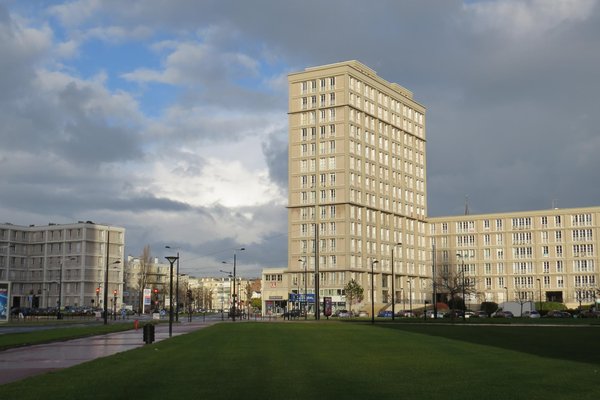France
Le Havre
Le Havre, the city rebuilt by Auguste Perret, is an outstanding post-war example of urban planning and architecture.
As a result of numerous air raids during World War Two, the port of Le Havre lost most of its city center buildings. Reconstruction planning began in 1945 with Auguste Perret as chief architect and city planner. Historical patterns like streets and squares were preserved, as well as the 16th-century cathedral that survived the bombings. Modernist buildings based on reinforced concrete were added and prefabrication was used, in order to create a homogenous ensemble.
Community Perspective: Dull and uninteresting to some, but the wide boulevards, the spacious squares, the straight lines and the plain forms do hold an appeal to others. You can visit the interior of the tower of Saint Joseph and a reconstructed show flat designed by Perrett’s studio. Ian has explained that it is even fun for kids.
Site Info
Official Information
- Full Name
- Le Havre, the city rebuilt by Auguste Perret (ID: 1181)
- Country
- France
- Status
-
Inscribed 2005
Site history
History of Le Havre
- 2005: Inscribed
- Inscribed
- Type
- Cultural
- Criteria
- ii
- iv
Links
- UNESCO
- whc.unesco.org
- Official
-
- unesco.ville-lehavre.fr — The city of Le Havre celebrates its new status with a special website
- Related
-
- lehavre-etretat-tourisme.com — Le Havre Tourisme
All Links
UNESCO.org
- whc.unesco.org — whc.unesco.org/
Official Website
- unesco.ville-lehavre.fr — The city of Le Havre celebrates its new status with a special website
Related Resources
- lehavre-etretat-tourisme.com — Le Havre Tourisme
Community Information
- Community Category
- Human activity: Urban planning
Travel Information
Ile-de-France Hotspot
Recent Connections
-
Perfect Inscriptions
2005 -
'Threatened' by Skyscrapers
Negative impact of Tour Alta: "Between … -
Octagons
Tower of l’Eglise de St JosephSee en.w…
Connections of Le Havre
- Geography
-
-
English Channel
-
Antipodes points
NEW ZEALAND SUBANTARCTIC ISLANDS(Antipodes islands)=LE HAVRE S49 41 E178 48 = N49 29 20.6 E0 06 54.8
-
- Trivia
-
-
Modern Board Games
Le Havre (2008)
-
- Architecture
-
-
Designed by Oscar Niemeyer
Le Volcan (Cultural Centre) -
Reinforced Concrete
-
Hyperboloid Structure
Volcan arts centerSee www2.archi.fr
-
Modern Urban Planning
Criterion (iv): Le Havre is an outstanding post-war example of urban planning and architecture based on the unity of methodology and system of prefabrication, the systematic use of a modular grid and the innovative exploitation of the potential of concrete. -
Gesamtkunstwerk
"Perret's project reflects his ideal: to create a homogenous ensemble where all the details are designed to the same pattern, thus creating a kind of Gesamtkunstwerk on the urban scale." (Official description) -
Octagons
Tower of l’Eglise de St JosephSee en.wikipedia.org
-
International style
-
- Damaged
-
-
'Threatened' by Skyscrapers
Negative impact of Tour Alta: "Between 2019 and 2023, a high-rise building was erected within the World Heritage property, without prior notification to the World Heritage Committee... t the integration of the Tour Alta into the property appears to be problematic, due to its colour, its blind ground floor and the removal of the anticipated ‘visual permeability’ of the building."See whc.unesco.org
-
Damaged in World War II
As a result of numerous air-raids during World War Two, the port of Le Havre lost its administrative and cultural center as well as much of its housing in the center of the city.
-
- World Heritage Process
-
-
First sites filling gaps cited by ICOMOS
modern towns 2005
-
OUV provided by Reconstructions
Criterion (ii): The post-war reconstruction plan of Le Havre is an outstanding example and a landmark of the integration of urban planning traditions and a pioneer implementation of modern development in architecture, technology and town planning. -
Perfect Inscriptions
2005
-
- Religion and Belief
-
-
Cathedrals
Cathedral of Le Havre, one of the few surviving structures from before WWII in the city centerSee en.wikipedia.org
-
- Human Activity
- Timeline
-
-
Built in the 20th century
In summer 1944, with a group architect colleagues Auguste Perret (1874-1954), then 70 years old, took the lead in the project of reconstruction of the town. (AB ev)
-
- WHS Hotspots
-
-
Ile-de-France Hotspot
2.5-3h by train
-
- WHS Names
-
-
Epic Subtitles
the City Rebuilt by Auguste Perret -
Named after individual people
Auguste Perret, chief architect and city planner (refers to full name of the site: Le Havre, the city rebuilt by Auguste Perret)
-
- Literature & Film
-
-
Location for a classic movie
Le Havre (2011, prize of the critics at Cannes Film Festival)See en.wikipedia.org
-
News
No news.
Recent Visitors
Visitors of Le Havre
- Adrian
- Adrian Turtschi
- Aitia
- aj
- Alexander Barabanov
- Alexander Lehmann
- Alexander Parsons
- alicemears
- A. Mehmet Haksever
- Ammon Watkins
- Ana Lozano
- Anna Wludarska
- anthonybonbon
- Antonio J.
- Argo
- ArnaudFilloux
- Artur Anuszewski
- Aspasia
- Atila Ege
- Aunti
- Avery MC
- Bauchat
- BaziFettehenne
- Bill Maurmann
- Bin
- Bram de Bruin
- Brendan Carroll
- Brett Baumann
- Bruno_Pires
- Can SARICA
- Caspar
- chenboada
- Cheryl
- Christian Wagner
- christof
- Christoph
- Christravelblog
- Claire Bradshaw
- Cluckily
- Clyde
- Cobaltrage
- Colossus
- Coppi
- Csaba Nováczky
- ctravel
- CynthiaW
- Daniel Chazad
- David Aaronson
- Dimitar Krastev
- Dirk-pieter
- Dolemite92
- Dorejd
- DutchHorn
- Dwight Zehuan Xiao
- Echwel
- Elaine McArdle
- Elia Vettorato
- eljx1988
- Ellen Nielsen
- Els Slots
- Enid MC
- Errol Neo
- Eva Kisgyorgy
- fabi-ddorf
- Fan Yibo
- Farinelli
- Femke Roos
- Filip Murlak
- Filippo Ubaldi
- FK
- Francky D'Hoop
- FS
- Gabbro
- Gary Arndt
- George Gdanski
- GeorgeIng61
- Gernot
- grimloch
- Hadrianus
- HaraldOest
- Harald T.
- Hasco
- hegeline@icloud.com
- henrik_hannfors
- Hubert
- Iain Jackson
- Ian Cade
- Ingemar Eriksson
- Ivan Rucek
- Jaakkotoivanen
- Jakob F.
- James F
- janem
- Janina Lehmann
- janis
- Janos
- Jan-Willem
- Jan Zimmermann
- Jarek Pokrzywnicki
- Jasam
- Javier Coro
- Jawnbeary
- Jean Lecaillon
- Jeanne OGrady
- Jeffrey Chai
- Jesse S 2010
- Jezza
- Joel on the Road
- Jonas Hagung
- Jonas Kremer
- jonathanfr
- Jon Eshuijs
- Jonoprout
- Joyce van Soest
- Jurre
- KarenBMoore
- Kbecq
- KentishTownRocks
- Kevin247
- Klaus Freisinger
- Kurt Lauer
- Lado Joel
- Laetitia Yin
- Lara Adler
- Laurey
- Laurine
- LaVale
- Lee Kai Loong
- Lindaflat
- Loic Pedras
- Lucas Del Puppo
- Luis Filipe Gaspar
- lynnz317@aol.com
- Maciej Gil
- manuel011197
- marc Rouserez
- Martina Rúčková
- MaxHeAnouBen
- MH
- michaelsballard
- Michael Turtle
- Mikko
- MMM
- Mohboh
- MoPython
- Naim Y
- nan
- Nicole Lampos
- Nihal Ege
- Nikolay Marinov
- Olli-Pekka Turunen
- Pat Martin
- Patrik
- Paul Schofield
- peacemaker2142
- Peter Lööv
- Petteri
- Philipp Leu
- Philipp Peterer
- Pieter Dijkshoorn
- pietprive06@kpnmail.nl
- pressdm
- Ralf Regele
- Randi Thomsen
- Reza
- Rick Ohm
- RobRos
- Roel Sterken
- Roger Ourset
- Roman Bruehwiler
- Rudegirl
- Sabrina Liebehentschel
- Samy G
- Sandra!
- Schnitzel
- scubarrie
- Sergio Arjona
- Shandos Cleaver
- sibariam
- Simonh
- Solivagant
- Stanislaw Warwas
- Stijn
- Svein Elias
- Tamara Ratz
- Tatiana Nikulnikova
- Tcchang0825
- Thomas Buechler
- Thomas Harold Watson
- Thomas van der Walt
- TimPick
- Tinamu
- Tingying He
- tommasorossotti
- triath
- Tsunami
- Twobaconsandaboston
- UncleSlavi
- Vanessa Buechler
- VB73
- Viaje al Patrimonio
- Vincent Cheung
- WILLIAM RICH
- Wojciech Fedoruk
- Wo_ko
- Xander Huang
- Xiquinho Silva
- YaroMir
- Zhenjun Liu
- Zizmondka
- Zoë Sheng
Community Reviews
Show full reviews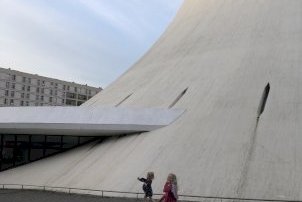
Come on Kids, lets explore …. Prefabricated concrete structural classicism!!
Le Havre for a rainy weekend in February probably doesn’t scream “Family Holiday” but this was perhaps our most successful attempt to combine World Heritage Sites with something a 4 year old will enjoy.
There were multiple reasons why this was enjoyable, but at the heart of all of them was how successful this rebuilding project was in creating a livable city. There is a bit of an academic pursuit in pointing out how every block of concrete pillars along ave. de Paris has a different shape or capital, but amazingly this is something that a six year old can latch onto and point out. I doubt Auguste Perret set out to create a city sized “spot the difference” puzzle but that is what we got from it.
And from what I understand that is sort of the point of what M. Perret set out to do. Creating units that could be easily reproduced and created from standard units, but also which aren’t monotonous. It draws from the ideas of Haussman in Paris that different heights and levels can break up buildings and make them feel more human. I’m sure my kids weren’t reacting to that on an intellectual level, but they didn’t find the km’s of reinforced concrete porticos in any way off putting, and seeing them running around exploring suggested this urban experiment worked well.
However the highlight for my daughters wasn’t Perret’s grid, …
Keep reading 0 comments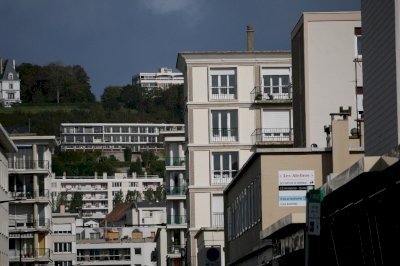
After WW2 France was faced with a severe housing shortage. During the wars construction had been on a low level. After WW2 a baby boom set in and people left their villages for the big cities, specifically Paris. Last but not least, the end of colonialism meant a huge influx of French citizens from the colonies back to France, most notably Algeria.
To deal with this the French constructed huge banlieus (suburbs) on the outskirts of town. These were build in a modernist style all over France. The citizens were mostly poor; new arrivals from the former colonies or poor French from the country side. The buildings are referred to as HLM (Habituation à Logement Moderé). While HLM literally only means rent controlled, in France it normally infers the image of a large concrete apartment block in a rough neighborhood.
Le Havre is similar to these HLMs and banlieus. The city was destroyed during WW2 and then rebuilt from scratch in modernist style afterwards. The leading architect was Auguste Perret, but you also find a building (the Volcano) from Oscar Niemeyer.
As is often the case, modernist architecture done right works: Le Havre is a pleasant visit. It makes you wonder what went wrong in the other banlieus of France. Personally, I think it's a mix of spending too little money on the architecture when creating the copies. And the population. Le Havre was a complete city for poor and rich inhabitants. The HLMs and banlieus meanwhile …
Keep reading 0 comments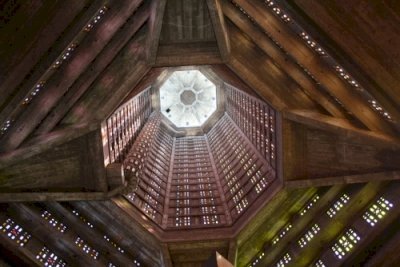
August 2018 - one of our main goals on that trip. The city is not beautiful i was heavily bombed in WW2, but the reconstruction, or rather complete new set up by August Perret, is a perfect model city. All the concrete buildings, which are made from the old ruins, align like model houses on a toy train. You feel like making a journey back to the 50s. The houses and parks look, like they just were planted or pulled up,
The harbour city has a very special mediteranean flair. We were at the city beach for about 1 hour up. We visited some of the buildings. Although I am not a big fan of modern churches, this chuch is just stunning. The colors of the small glass windows are perfectly aligned and create a special atmosphere. It was designed by a women as we learned. Too bad for the old Le Havre getting lost, but the new one is very special too.
Keep reading 0 comments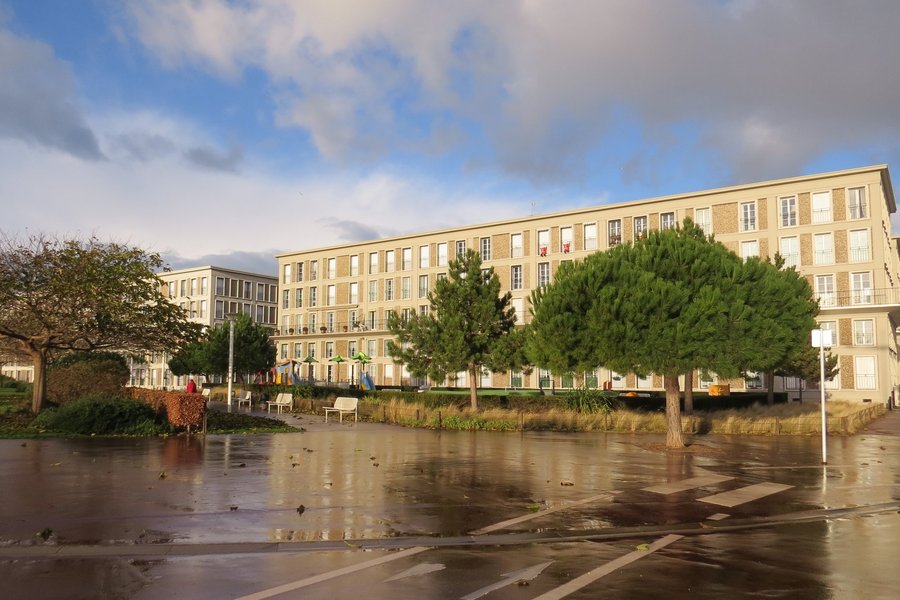
I visited Le Havre as a day trip from Paris on a hot summer day during the EURO 2016, as a distraction after watching a poor performance by the Austrian team. It is a very pleasant city with many parks and a beach, and the WH part can be explored in a short walk. During WW II, Le Havre was an important port for the Germans, and thus regularly bombed by the Allies. After the war, it was rebuilt according to a master plan by Auguste Perret, also known as the mentor and teacher of Le Corbusier. The only buildings designed by Perret himself are the town hall (impressive from the outside, but I did not enter it) and the Church of St. Joseph with its large tower, known as the symbol of Le Havre. It is actually quiet nice inside, although the outside looks like it was designed by the same architect as the Palace of Culture in Warsaw. The 15th-century cathedral also makes for an interesting visit, as it is one of the very few buildings to have survived the air raids. I also did an interesting harbour cruise and so spent an enjoyable day in this city, even though I still have some doubts about the WH value.
Keep reading 0 comments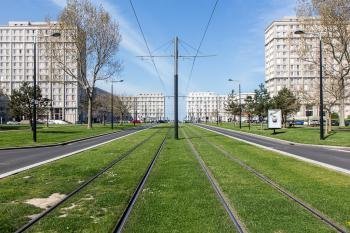
You would think that a city made of concrete might be quite brutalistic or ugly - but Le Havre is absolutely stunning. There is something about the way the architects have taken the plain blocks and give them texture and colour that is quite unique and plays with your senses in a delightful way.
The highlight of the visit is the cathedral and you must go inside to see the colourful displays you get when the sun shines through the windows. Many of the other public buildings and apartment blocks you can just enjoy from the outside while walking around.
It is possible to go inside an apartment that has been maintained in the same style as it would have been when Le Havre was first developed like this after the war. Unfortunately I wasn't able to do this myself because of a mix up with my booking but I hear that it is well worth it!
Keep reading 0 comments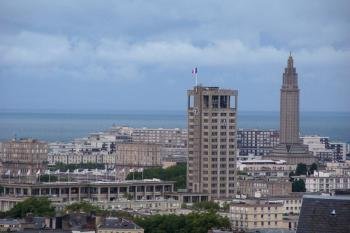
"Perret, la poétique du béton" (Perret, the poetics of concrete) was written on a poster at the Maison du Patrimoine in Le Havre. Well, that's certainly exaggerated and I can understand the visitors who find the city dull and uninteresting. But I liked to stroll through the streets and explore the city: the wide boulevards, the spacious squares, the straight lines and plain forms. The buildings appear monotonous at first glance, but at a closer look you can see the subtle details, the ornaments and the different shades of colour.
Le Havre was almost completely destroyed in WWII and Auguste Perret was commissioned to rebuild the city. Perret was known for his preference for concrete and he used the material for all buildings. It was novel and radical - and controversial - to rebuild a historic city according to a uniform plan entirely from concrete. The result was unusual for that time but definitely an improvement in the living conditions. Even today, the city appears light, airy and spacious.
The city seems to be very proud of its World Heritage status, they were celebrating the 10th anniversary with an extensive program, many culural events and special guided tours. The Town Hall was decorated with banners with the UNESCO logo and looked exactly like on Ian's photo below from 2005, obviously they have kept the banners.
The buildings opposite the Town Hall were the first project designed by Perret's studio. You can visit a reconstructed show flat in one of these …
Keep reading 0 comments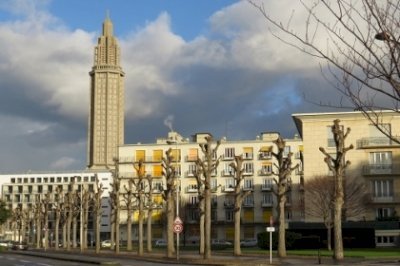
I visited Le Havre as a break on my 6.5-hour drive from Bayeux back home. My expectations for the city weren't high so I allowed only an hour or two, but it wasn't bad at all. I could drive up all the way to the Hotel de Ville, and parked in the street 50m from there. These streets were the first pleasant surprise: very wide, aligned with trees, with a tramway in the middle, and lots of parking spaces on either side. The pavement has separate tracks for pedestrians and cyclists. They were used by locals out for some Sunday morning exercise.
To see the city center I walked the main boulevards which are aligned as a triangle: Rue de Paris, Boulevard Francois 1er and Avenue Foch. The Rue de Paris starts in front of the Hotel de Ville, which is one of the main sights of the city. The street itself is a shopping street but has the characteristic beige low rise buildings that I would see throughout. On the right, you will pass the white cultural center that Niemeyer gave the city, on the left side lies the city's cathedral, one of the few surviving old buildings. The street ends at the seafront, where two tall towers designed by Lambert symbolize a gateway into the city. The area was/is used as a social housing project. I liked the architecture of it.
From there, the Boulevard Francois 1er starts and you walk towards the city's beacon: the …
Keep reading 0 comments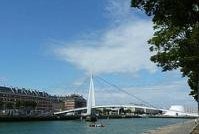
I visited this WHS in Summer 2011. The strange looking cathedral was the highlight of my visit but the modernist style of Auguste Perret could also be admired in the city centre. The name Le Havre, as used in modern times, simply translates as "the port" or "the harbour" and although a lot has been done to overcome the urban gloom and greyness of a city rebuilt after World War II, still there is nothing that would make me want to stay overnight. Practically one day here is enough to see it all.
Keep reading 0 comments
I've seen several examples of post-WWII rebuilds, most of them in Germany, like Kassel, Hannover, and Wupperthal. Cologne tops the list because of its size. These places all have something in common; they possess a chilling ambiance that mercilessly reminds one of the human will to annihilate.
When I learned last summer that LeHavre had been selected for the World Heritage List, I was incredulous. This is because I cannot forget the day in July 1991 that I arrived there by train from Paris. I had a five-hour wait for the ferry to Portsmouth. Sad, grey, severe, and angular, and the materials looked shoddy. Now, I wasn't expecting a tourist venue oozing quaintness. But I wasn't prepared for this. The whole town seemed to weep.
France, 1947. Devastated in two World Wars, politically adrift,losing its colonies,and broke. An elderly and respected architect is granted one of his last commissions, and the result, as least for me on that summer day, was an impression of crime, bewilderment, and profound grief. I'd seen the memorials at Verdun, but they offered little in the competition for Saddest Place in Europe. One recalls Patrick McGoohan as The Prisoner in his sinister village, or maybe a Jacques Tati remake done by George Romero, or a minimalist Rodenbach updating Bruges la morte.
Maybe it's changed, but from the photos I've seen, I don't think so. Now that UNESCO has sanctified it, so to speak, I dream about visiting it again, out of respect for the folks …
Keep reading 0 comments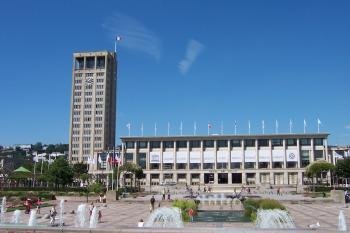
The first thing you can see when approaching from the sea is the tall tower of St Joesph church, this was one of the key projects that Perret designed himself, it is imposing if slightly phallic, but the inside is very impressive the tower has multi coloured glass and it gives the whole place an peculiar glow, making it very tranquil. The rest of the city is laid out on a grid and is all made of reinforced concrete, but there are subtle differences in the buildings. There are several plaza and gardens around the centre one of which contains the impressive cultural centre designed by Oscar Neiymeyer (architect of Brasilia).
I visited just two weeks after Le Havre was added to the list and there were banners coving the Town hall and flags flying all around the main square which was very nice to see. You can climb the Tower of the Town Hall to get a good over view of the city's lay out.
On the whole the site was nice but I didn't really feel that I was viewing something exceptional.
As I live in Portsmouth, in southern England I have regularly visited many of the northern French ports that are linked by ferry. I had been through Le Havre several times before (even sleeping in the ferry port at the end of a trip across Europe) but I couldn't bring myself to count it as a visited site, as I only really passed through. So I …
Keep reading 0 comments
